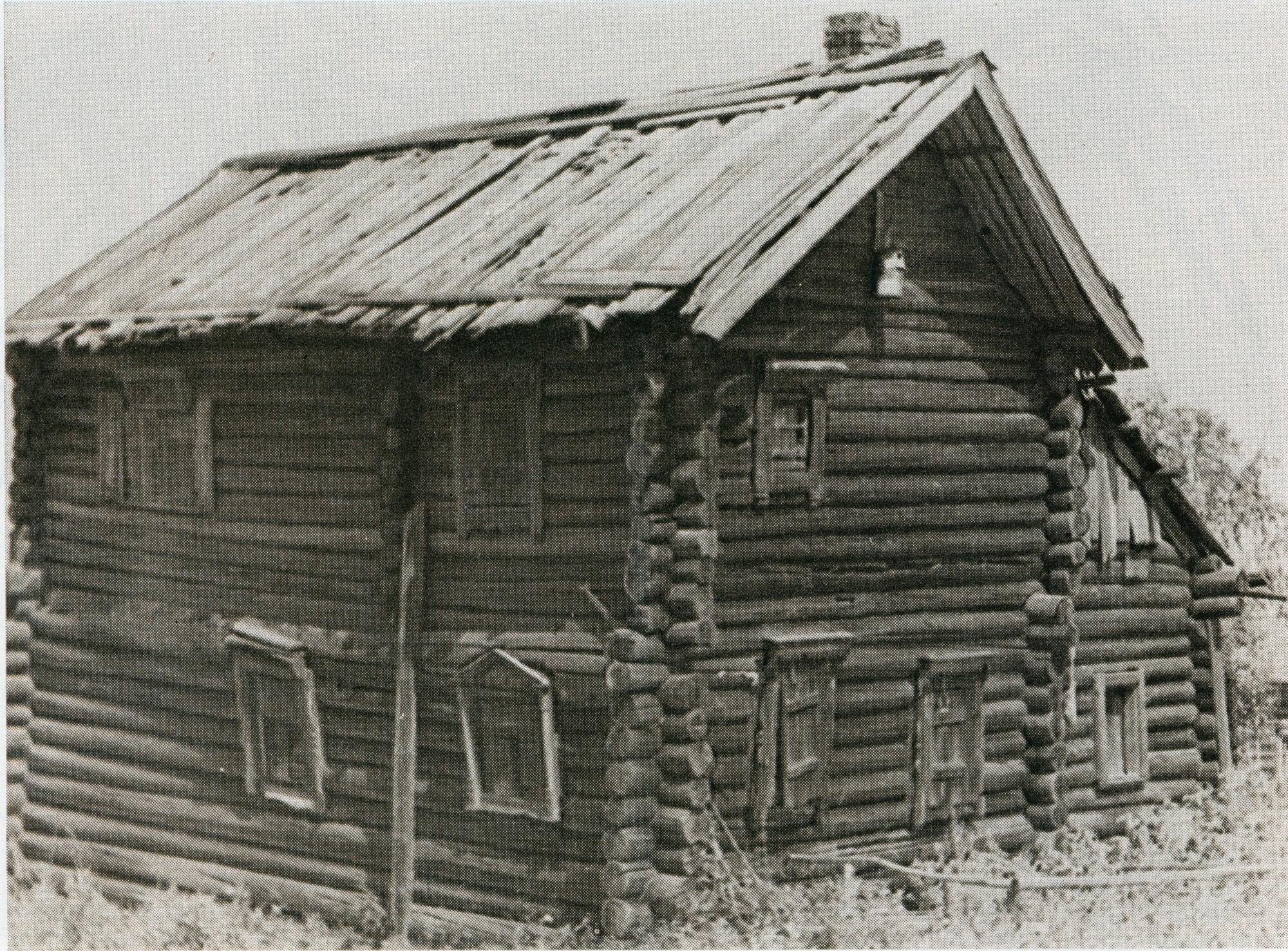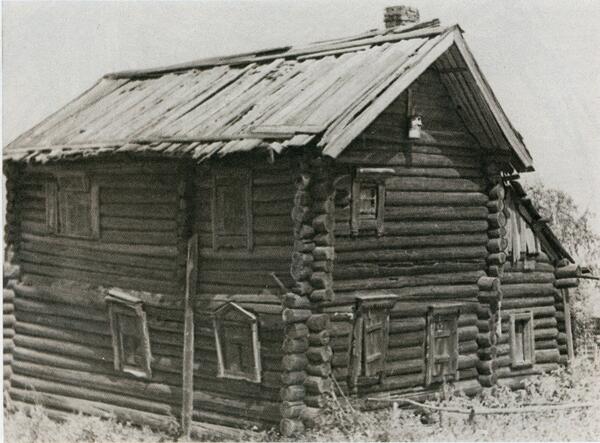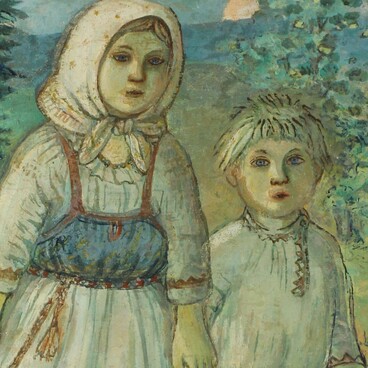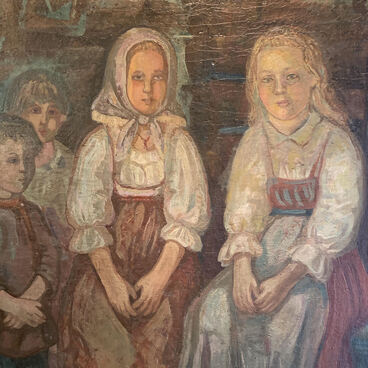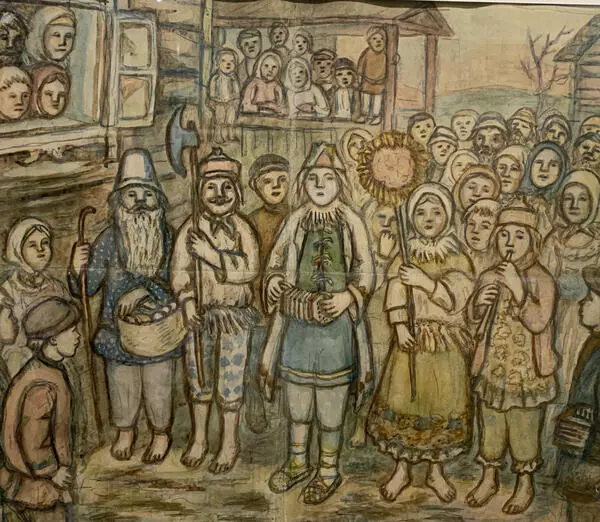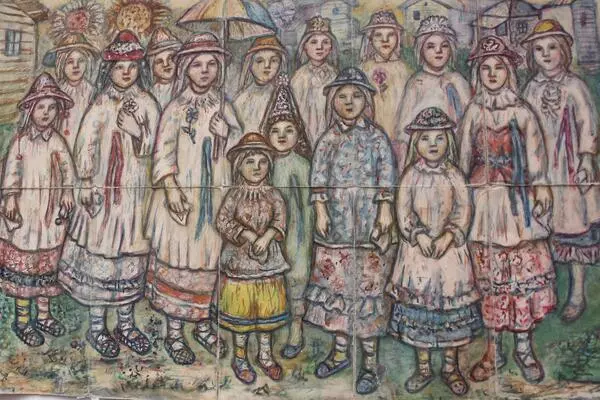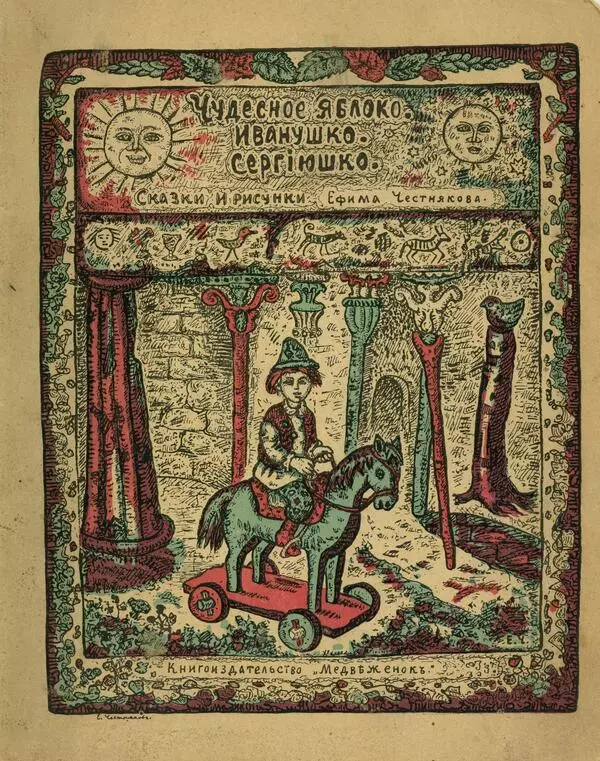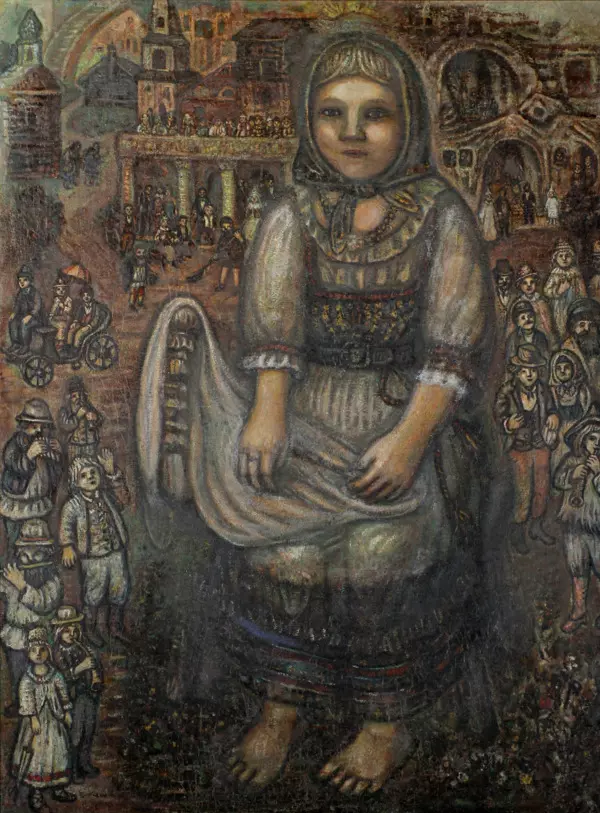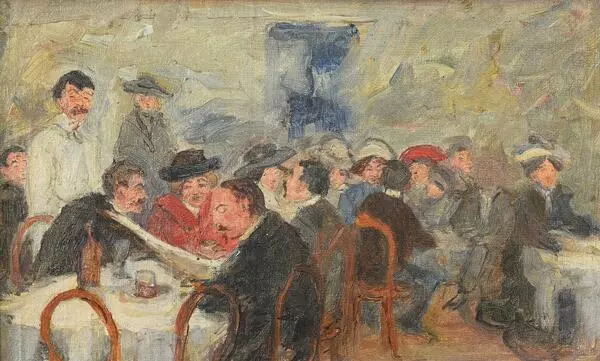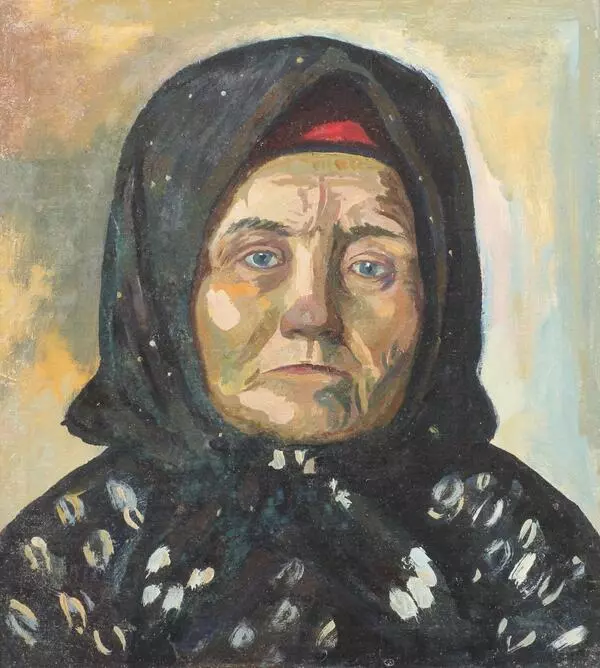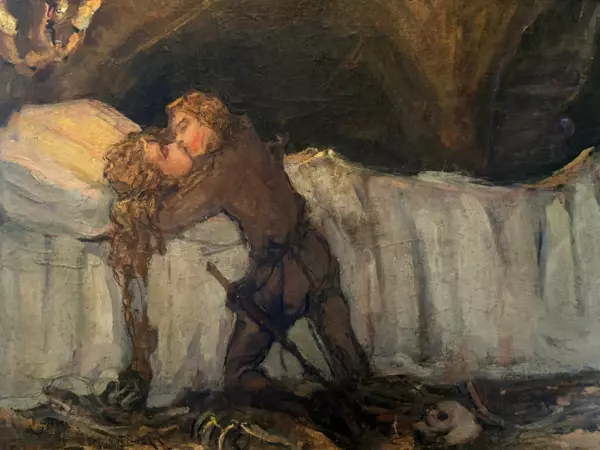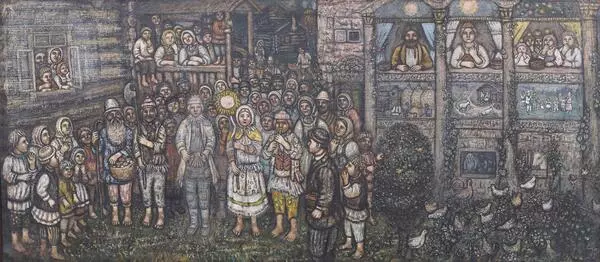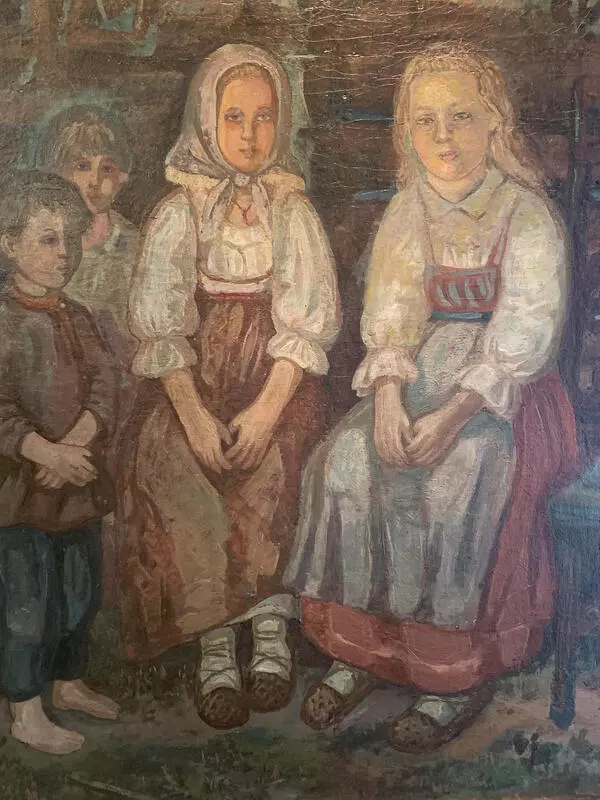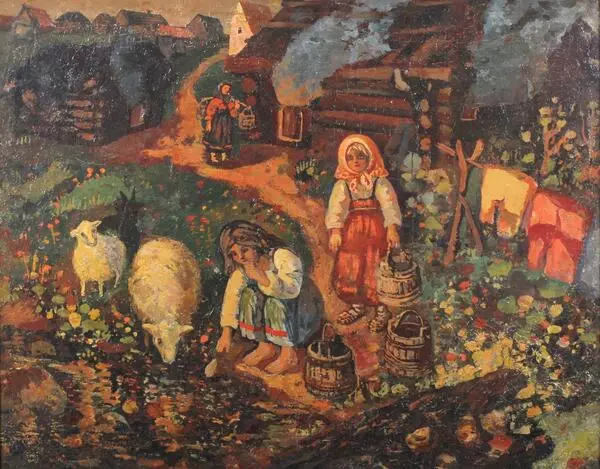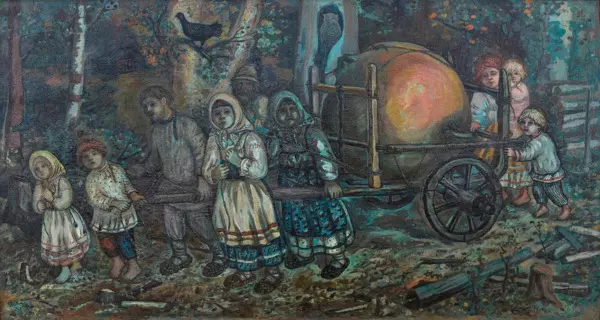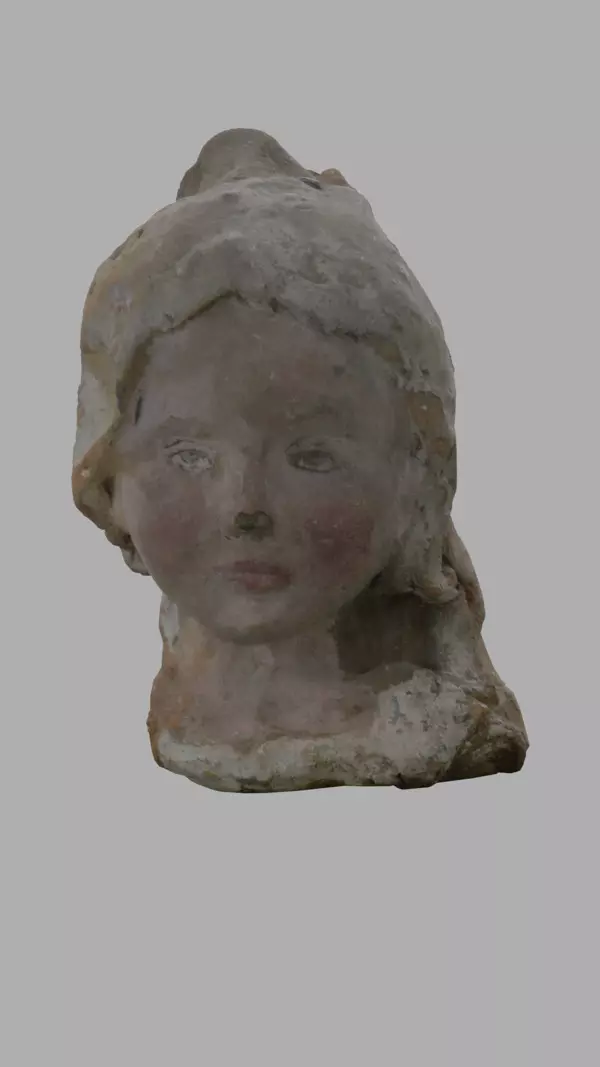Immediately after his return from Saint Petersburg, Yefim Chestnyakov needed to start dividing his parent’s property and belongings because his sister Tatiana’s family decided to live separately. His father left the artist the greater part of the log house and the land, but Yefim Chestnyakov chose to let his sister have his share of the home and half the field for cultivation. He then began building his own abode suitable for an artist to work in. Since he did not have the necessary materials or enough money, Yefim Chestnyakov used his own plan during the construction. The shed elicited curiosity and baffled comments from his fellow villagers for a long time after it was completed. Once finished, the artist’s building looked like a cross between a log and drying house (a barn used for drying hay stacks before the milling). Only memories and a photograph of it survived to this day. The windows of the shed were arranged in a completely different manner to a peasant’s house.
The artist’s primary concern was not with what his home looked like from the outside, but with whether its interior was sufficiently well lit to work in without difficulty. Yefim Chestnyakov used an axe and other instruments to build his live-in studio all by himself. Nina Andreyevna Rumyantseva, a regular participant in Yefim Chestnyakov’s performances, who had known him since the age of eight, recalled “There was much about the artist”s house, built out of two barns, that elicited curiosity and appealed to us. When we visited him, we climbed up onto the second floor via a make-shift ladder. He immediately sat us down on benches, wound up the gramophone with its metal records, and taught use to play the gusli, ” (note: a multi-string plucked instrument) “various bells, penny whistles and clay pipes. After our numerous entreaties, the artist opened the curtain of his clay theater, which housed various home-made dolls, clay statuettes, buildings and hay stacks arranged inside. He gave all these characters voices. Once we have had enough of games, Yefim Chestnyakov took us downstairs, to his living quarters, where he showed us his paintings and drawings, and read his fairy tales to us. We always left his home satisfied, having learnt a lot.”
Yefim Chestnyakov hoped to establish a general education system for everyone in Shablovo and aimed to achieve this goal. On 1 December, 1920, a kindergarten was opened in Yefim Chestnyakov’s house-shed with the support of Bolshevik Fyodor Chumbarov. ‘Art rids one of jealousy towards palaces and great halls. Even in a shed, art builds a house of dreams and lives in it.’ The artist believed that the kindergarten he founded would be the first step to establishing his Shablovo general education system for people of all ages. Its program of studies shows the core subjects for children: reading, reciting texts and drawing with pencils. In 1925, the kindergarten in Shablovo, which Yefim Chestnyakov headed, was closed. According to a letter from the artist to Korney Chukovsky, the house-shed was deteriorating. ‘I built my home using really poor-quality materials. You might ask, is it possible to study and create art in a freezing shed? Without a warm studio, or a minute of rest…’ Afterwards, Yefim Chestnyakov moved to his parents’ house. On 26 June, 2004, on the spot where the shed built by the artist stood, Yefim Chestnyakov’s house-museum was opened.
The artist’s primary concern was not with what his home looked like from the outside, but with whether its interior was sufficiently well lit to work in without difficulty. Yefim Chestnyakov used an axe and other instruments to build his live-in studio all by himself. Nina Andreyevna Rumyantseva, a regular participant in Yefim Chestnyakov’s performances, who had known him since the age of eight, recalled “There was much about the artist”s house, built out of two barns, that elicited curiosity and appealed to us. When we visited him, we climbed up onto the second floor via a make-shift ladder. He immediately sat us down on benches, wound up the gramophone with its metal records, and taught use to play the gusli, ” (note: a multi-string plucked instrument) “various bells, penny whistles and clay pipes. After our numerous entreaties, the artist opened the curtain of his clay theater, which housed various home-made dolls, clay statuettes, buildings and hay stacks arranged inside. He gave all these characters voices. Once we have had enough of games, Yefim Chestnyakov took us downstairs, to his living quarters, where he showed us his paintings and drawings, and read his fairy tales to us. We always left his home satisfied, having learnt a lot.”
Yefim Chestnyakov hoped to establish a general education system for everyone in Shablovo and aimed to achieve this goal. On 1 December, 1920, a kindergarten was opened in Yefim Chestnyakov’s house-shed with the support of Bolshevik Fyodor Chumbarov. ‘Art rids one of jealousy towards palaces and great halls. Even in a shed, art builds a house of dreams and lives in it.’ The artist believed that the kindergarten he founded would be the first step to establishing his Shablovo general education system for people of all ages. Its program of studies shows the core subjects for children: reading, reciting texts and drawing with pencils. In 1925, the kindergarten in Shablovo, which Yefim Chestnyakov headed, was closed. According to a letter from the artist to Korney Chukovsky, the house-shed was deteriorating. ‘I built my home using really poor-quality materials. You might ask, is it possible to study and create art in a freezing shed? Without a warm studio, or a minute of rest…’ Afterwards, Yefim Chestnyakov moved to his parents’ house. On 26 June, 2004, on the spot where the shed built by the artist stood, Yefim Chestnyakov’s house-museum was opened.
